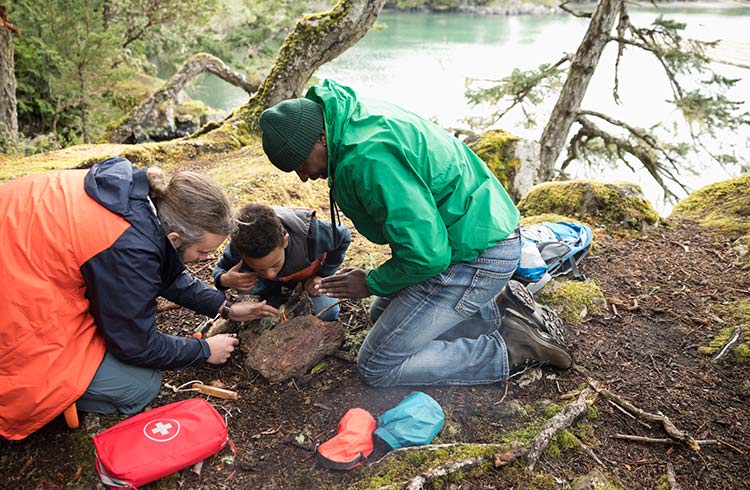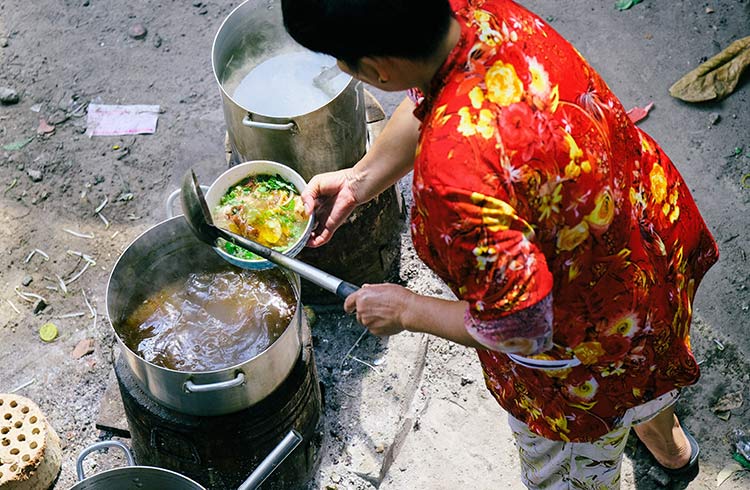What Should You Carry in Your Travel First Aid Kit?
What do you need in a travel medical kit? Our roving medical expert, Dr Erik McLaughlin MD, shares the essential first aid items you must carry wherever you go in the world.
 Photo © iStock
Photo © iStock
Before your trip beings, start planning what you would need in your medical kit. A good travel first-aid kit contains just enough to deal with potential problems, but still light enough to be carried.
Before you begin to think about building a travel medical kit, you need to find out a few things:
- How many people are you traveling with? How old are they?
- Where are you going?
- How many days are you traveling?
- What activities will you be doing?
- How far away from advanced medical care will you be?
- Does anybody you're traveling with have prior medical problems?
- What I use
How many people are you traveling with? How old are they?
Knowing the number of travelers will allow you to form an idea of the number of items to carry.
This generally goes for basic and commonly used items such as simple pain medication, blister treatment, band-aids, and anti-diarrhea medicine. No one can ever be fully prepared for all potential problems, and you should have adequate supplies of all required items.
The age of the travelers is important because you'll want to pack appropriate age-related medications, especially if children are involved. Kids are not simply little adults, they require different types and doses of medications, for example. Anybody traveling with kids should have a special kit just for little ones.
Where are you going?
Location is everything in travel medicine. Knowing the risks of the area you are visiting will help you not only build a viable medical kit, but also prevent illness overall. Find out what the climate, weather and potential health risks at your destination might be and pack accordingly. Will there be mosquitoes, for example, in which case pack repellent and antibacterial cream.
How many days are you traveling?
A trip over a long weekend is vastly different from a seven-week adventure. The duration of travel will dictate how much you will need to carry in your first-aid kit, as well as whether you will have opportunities to restock your supplies. If you're going off-grid, you'll need to carry more of the common items that will be used more frequently, for example.
What activities will you be doing?
Think about the activities you'll be taking part in and the potential risks associated with these events. This applies to all activities, not just athletic or sporty pursuits.
For example, carrying medicine for high-altitude and mountain sickness is worthless if you're going on a scuba trip – while carrying a lot of blister treatments and Ibuprofen is very wise for a group planning on a lot of hiking or walking.
How far away from advanced medical care will you be?
The more remote your location, the longer you'll need to be prepared to provide care.
The other question that needs to be asked is, "What level is the nearest, advanced medical care?" A run-down, poorly-stocked clinic in a developing nation has a good chance of reusing medical supplies. This means a high risk of infection. If you know you're traveling to a remote location where pharmacies are rare and their supplies are minimal, pack items such as antibiotics that might not be available.
Does anybody you're traveling with have prior medical problems?
Knowing the medical history of your travel companions is very important. A traveler with a history of heart disease will require a few different medications than a pregnant woman or a child with asthma.
Travelers that take medications on a daily basis should be carrying their home medications with them on their travels. They should also be carrying an extra supply for a few more days, in the event of delays or extended travel.
What I use in my first-aid kit
A medical kit should be customized depending on all of the above factors. I use the Adventure Medical Kit Mountain Medic as my starter kit and add to that with other items I will need depending on the trip.
This kit was a good starting point and saved me the hassle of gathering up a blood pressure cuff, stethoscope, individual packets of Ibuprofen, quick clot, nasal trumpet airways and other useful but hard-to-find items. You can see the kit's basic contents here.
I then set to work adding my own personal touches based on our group, locations visited activities and time away from home. An important side note, however, is that in some countries certain kinds of medicines could breach entry requirements, so make sure you check that the contents of your pack will pass through airport security.
If you're carrying a small pair of scissors or nail clippers, remember to put these items in your check-in luggage, not carry them onto the plane – they'll be confiscated.
Here are a few essential items to pack:
- Band-aids
- A pair of gloves
- Compression bandages
- Antibacterial wipes and creams
- Antihistamine creams for itches
- Antihistamine tablets for allergic reactions
- A small roll of surgical tape
- Gauze dressings (you can buy individually wrapped squares).
Sanitary pads or tampons can come in handy if you run out of band-aids, and need to mop up blood on a wound.



No Comments